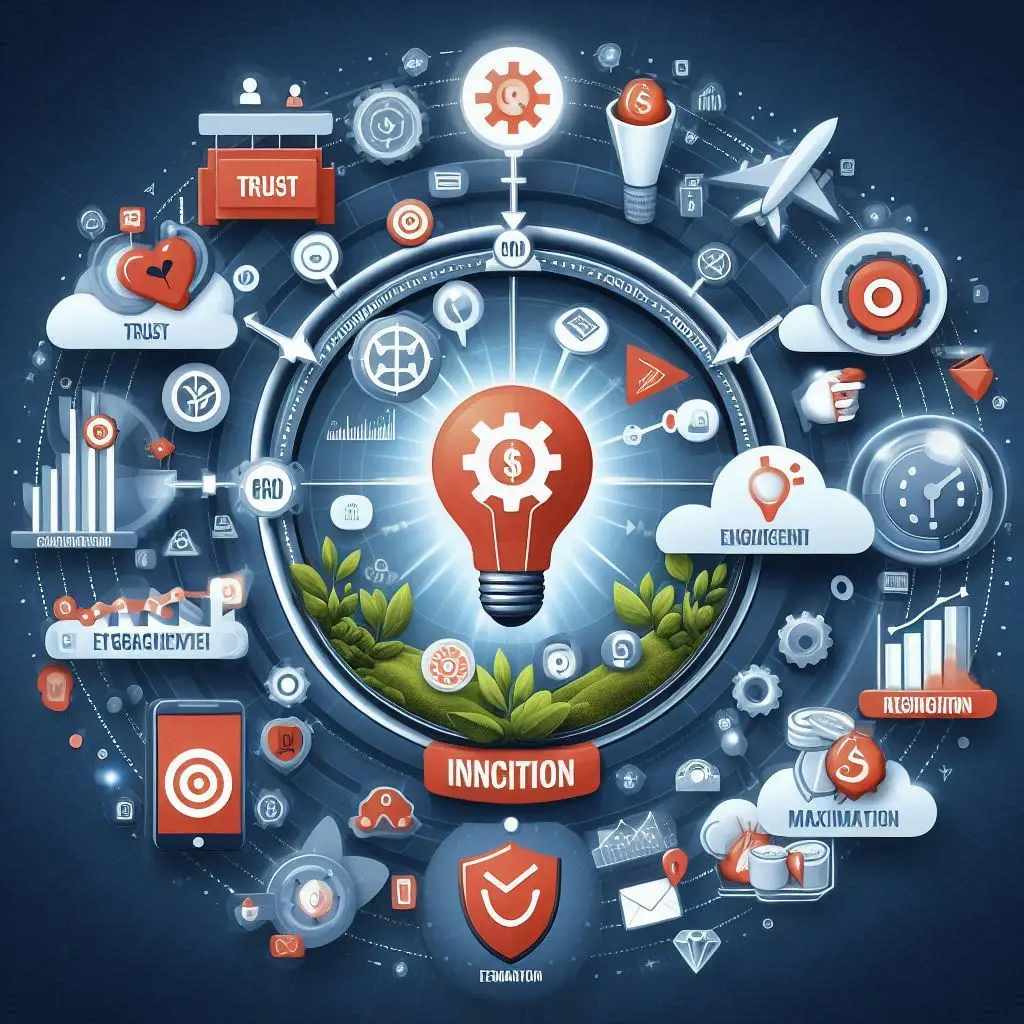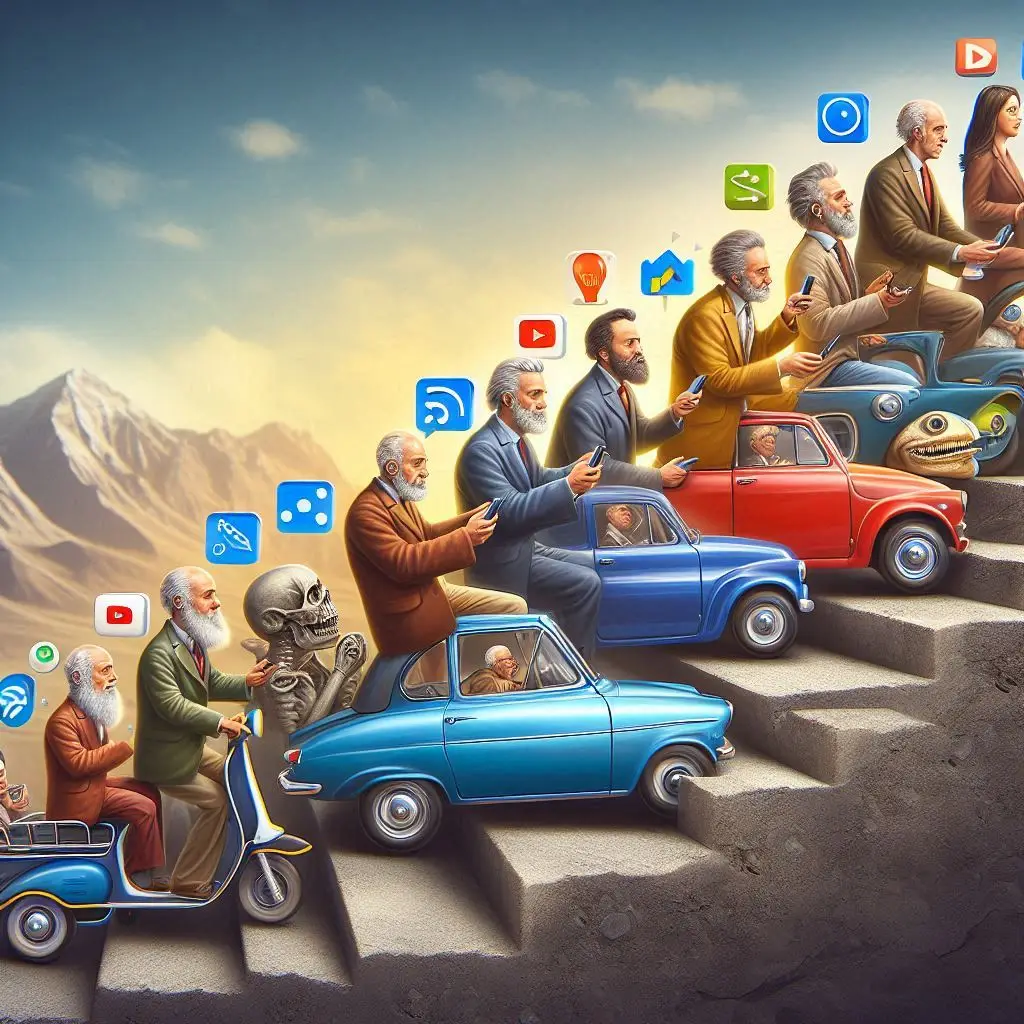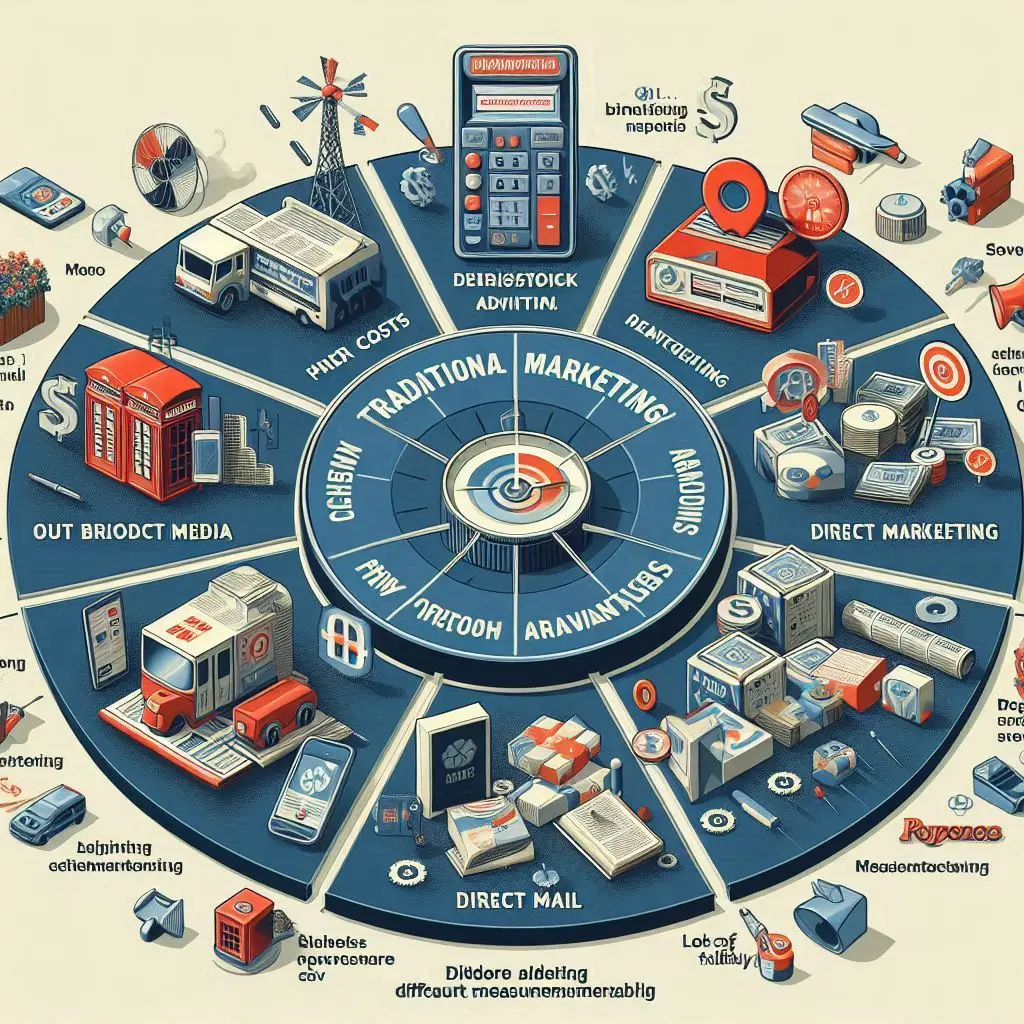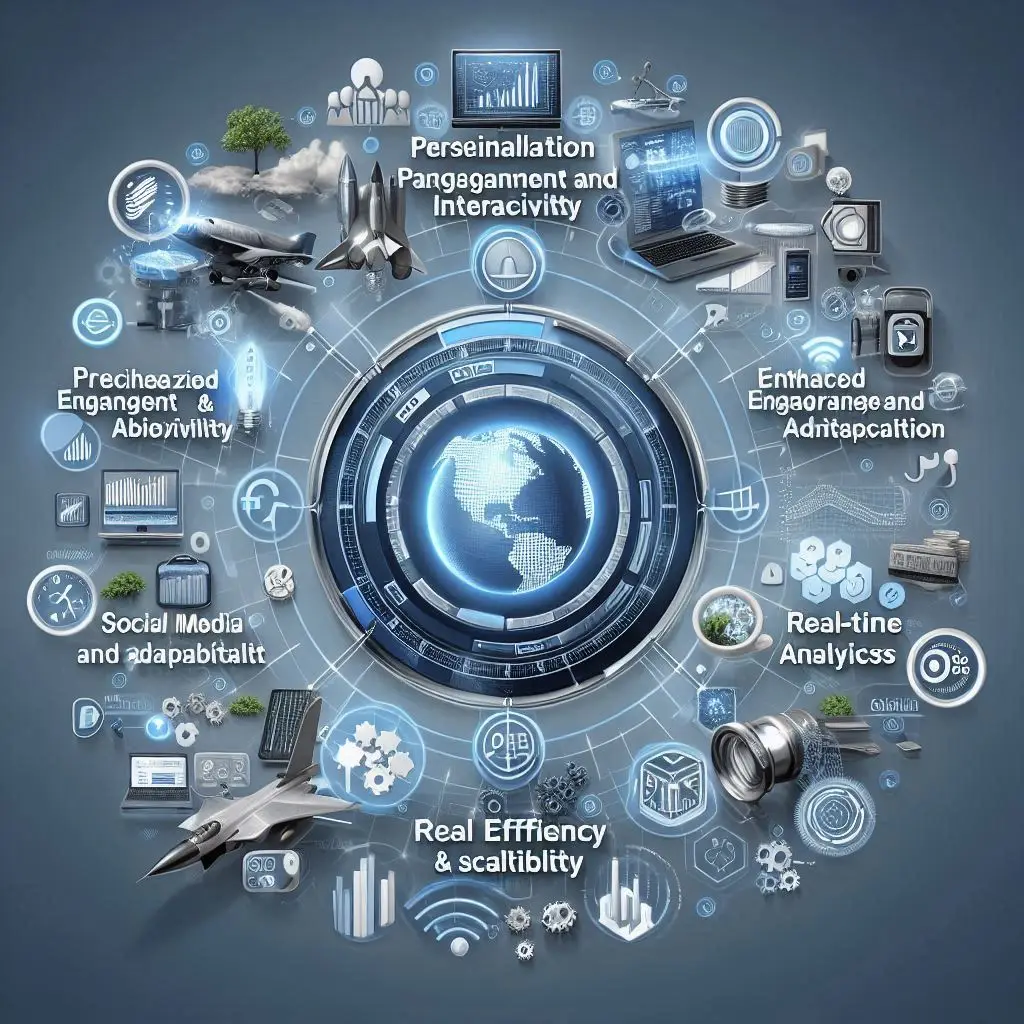In today’s competitive business environment, the way brands communicate with their customers is evolving at a rapid pace. Traditional marketing, which once dominated the advertising landscape, now coexists with digital marketing—each bringing unique advantages and challenges. In 2025, the most successful brands no longer choose one approach over the other; instead, they integrate both methods to build trust, drive engagement, and maximize ROI. This comprehensive guide explores the evolution, core components, benefits, and challenges of traditional and digital marketing, along with strategies for integrating these approaches effectively.

Table of Contents
ToggleI. The Evolution of Marketing Communication
Marketing communication has transformed dramatically over the past decades. Initially, brands relied on physical and broadcast media to reach consumers, using print ads, billboards, TV, and radio to create widespread awareness. With the advent of the internet and mobile technology, digital marketing emerged as a powerful tool that not only reaches a global audience but also offers real-time engagement and precise targeting.

A. Traditional Marketing: The Bedrock of Brand Communication
Traditional marketing encompasses the established methods that predate the digital revolution. These approaches are built on a one-to-many communication model, where brands broadcast their messages via channels largely beyond the immediate control of consumers. Key elements include:
Print Media: Newspapers, magazines, brochures, and direct mail are used to disseminate information and establish credibility.
Broadcast Media: Television and radio advertisements create memorable brand experiences through storytelling and mass appeal.
Outdoor Advertising: Billboards, posters, and signage capture attention in public spaces, delivering repeated exposure.
Direct Communication: Telemarketing and in-person events foster personal connections, reinforcing brand reliability and local presence.
Traditional marketing offers a tangible connection that builds trust—physical advertisements leave a lasting impression on audiences that appreciate the personal touch.

B. Digital Marketing: The Data-Driven Revolution
Digital marketing leverages online platforms and technologies to engage customers interactively. This approach uses data to craft personalized, real-time messages that resonate with target audiences. Core practices include:
Social Media Marketing: Platforms like Facebook, Instagram, LinkedIn, and TikTok enable brands to build communities and spark direct dialogue.
Search Engine Optimization (SEO) & Pay-Per-Click (PPC): These techniques ensure that content is discoverable when potential customers search for relevant information.
Content Marketing: Blogs, videos, podcasts, and infographics educate and inspire, nurturing long-term brand loyalty.
Email and Mobile Marketing: Personalized campaigns reach customers directly on their devices, creating ongoing engagement.
Data Analytics: Real-time insights allow marketers to adjust campaigns swiftly, ensuring optimal performance and a higher return on investment.
Digital marketing’s strength lies in its ability to target specific audiences, measure performance precisely, and adapt quickly to changing trends.

II. In-Depth Analysis of Traditional Marketing
A. Core Components and Their Advantages
Traditional marketing remains relevant—especially for building local presence and establishing credibility—with several distinct advantages:
1. Print and Broadcast Media
Print and broadcast media have long been the backbone of traditional advertising. They offer:
Tangibility and Trust: Physical materials (e.g., brochures, newspapers) provide a sensory experience that helps build lasting trust.
Local Focus: These channels are particularly effective for targeting regional markets or demographics that are less active online.
Established Authority: Well-known media outlets lend credibility, positioning your brand as an established authority.
2. Outdoor Advertising
Outdoor advertising—including billboards, transit ads, and posters—ensures consistent visibility. The benefits include:
High Frequency: Repeated exposure in strategic locations reinforces brand recognition.
Broad Local Reach: Effective for capturing the attention of local consumers who are on the move.
3. Direct Mail and Telemarketing
Direct communication strategies like direct mail and telemarketing offer personalization that digital channels sometimes lack:
Personalized Engagement: Custom-tailored messages delivered directly to homes or via phone can create a strong personal connection.
High Conversion Rates: When executed correctly, these methods can lead to substantial conversion rates, particularly for local businesses.
B. Challenges of Traditional Marketing
Despite its many benefits, traditional marketing faces certain limitations:
Higher Costs: Production, distribution, and placement expenses for TV ads, print media, and billboards are often significant.
Difficult Measurability: Tracking the direct impact of traditional campaigns is challenging and typically relies on indirect metrics such as surveys and sales data.
Lack of Flexibility: Once an ad is produced, it is difficult to modify it in response to feedback or changes in the market.

III. The Digital Marketing Advantage
A. Precision and Personalization
Digital marketing’s most compelling strength is its ability to deliver highly targeted and personalized messages. By leveraging advanced data analytics, brands can:
Tailor Messaging: Craft messages that are relevant to specific audience segments based on demographics, interests, and behavior.
Achieve High ROI: Focus resources on the most promising segments, ensuring that every dollar spent contributes to tangible results.
Optimize in Real Time: Make swift adjustments to campaigns based on real-time performance data.
B. Enhanced Engagement and Interactivity
Digital channels foster a two-way conversation, turning consumers into active participants:
Social Media Interaction: Direct engagement through comments, likes, and shares builds community and deepens customer relationships.
Content Marketing: Engaging, informative content (blogs, videos, podcasts) not only educates but also invites dialogue.
User-Generated Content: Encouraging users to contribute content creates a sense of community and authenticity, further enhancing engagement.
C. Cost Efficiency and Scalability
For many businesses—especially startups and SMEs—digital marketing offers a cost-effective solution with scalable results:
Lower Entry Costs: Many digital platforms, such as social media and email, have minimal upfront costs.
Scalability: Campaigns can be easily adjusted or scaled depending on performance, making them flexible to changing business needs.
Measurable Results: Tools like Google Analytics and social media insights provide clear metrics to gauge success and inform future strategies.
D. Real-Time Analytics and Adaptability
Digital marketing thrives on its capacity to provide real-time feedback:
Immediate Insights: Detailed analytics allow marketers to monitor key performance indicators (KPIs) and adjust tactics swiftly.
Data-Driven Decisions: Continuous optimization based on data ensures that campaigns remain effective over time.
Trend Prediction: Advanced analytics and machine learning can predict emerging trends, enabling proactive strategy adjustments.

IV. Integrating Traditional and Digital Marketing Strategies
A. The Case for a Hybrid Approach
In 2025, the most successful brands use an integrated marketing strategy that combines the trustworthiness of traditional methods with the precision and adaptability of digital techniques. An integrated approach offers:
Broader Reach: Traditional channels build brand awareness locally and regionally, while digital channels extend your reach globally.
Enhanced Credibility: A consistent presence across both offline and online mediums reinforces your brand’s authority and reliability.
Synergistic Benefits: Data from digital campaigns can enhance traditional efforts (e.g., using QR codes in print ads) and vice versa, resulting in a comprehensive view of customer behavior.
B. Practical Integration Strategies
1. For Local Businesses
Local businesses can maximize their impact by blending traditional and digital marketing:
Print and Digital Cross-Promotion: Use traditional media such as flyers or local newspaper ads to promote a digital offer or event, incorporating QR codes that lead to your website.
Local SEO and Social Media: Optimize your digital content for local search terms and engage with local communities on social media platforms.
In-Person Events and Online Follow-Up: Host local events and capture digital content (photos, videos) to share online, creating a bridge between offline and online engagement.
2. For National and Global Brands
Larger brands can leverage the strengths of both approaches to create cohesive, far-reaching campaigns:
Television and Digital Retargeting: Use TV commercials to build broad awareness and follow up with targeted digital ads to convert viewers into customers.
Content Marketing and Guest Posting: Develop high-quality content that can be repurposed across various digital platforms and supported by traditional PR efforts.
Integrated Campaigns: Run coordinated campaigns where traditional media, digital ads, and social media work together to deliver a consistent brand message.
C. Measuring Success in an Integrated Framework
A robust measurement system is crucial for an integrated strategy:
Unified Metrics: Develop KPIs that encompass both traditional and digital outcomes, such as overall brand awareness, engagement, and conversion rates.
Cross-Channel Analytics: Use tools like Google Analytics, Google Search Console, and CRM systems to gather data from all channels.
Continuous Improvement: Regularly review performance data to refine strategies, ensuring that both traditional and digital efforts complement one another and contribute to overall marketing objectives.
V. Overcoming Challenges in Today’s Marketing Environment
A. Adapting to Changing Consumer Behavior
Consumer behavior is continuously evolving due to technological advances and cultural shifts. Successful marketers must:
Monitor Trends: Stay updated on the latest trends using data analytics and market research.
Adjust Messaging: Ensure that messaging reflects the current needs, interests, and behaviors of your audience.
Innovate Continuously: Experiment with new channels and formats to engage consumers in creative ways.
B. Balancing Authenticity with Technology
In an increasingly automated world, authenticity remains paramount:
Genuine Engagement: Ensure that both traditional and digital content are created with the end user in mind.
Consistent Brand Voice: Maintain a consistent tone and message across all channels, whether in a print ad or a social media post.
Transparent Practices: Build trust by being clear about how customer data is used and by focusing on high-quality, valuable content.
C. Managing Budget Constraints
Budget allocation is critical, particularly for small and medium-sized enterprises:
Prioritize High-ROI Channels: Allocate budgets based on where your audience is most active and where you can achieve the greatest return.
Scalable Strategies: Use digital marketing’s flexibility to scale campaigns up or down as needed.
Integrated Budgeting: Consider the complementary effects of traditional and digital marketing to maximize overall impact without overspending.
VI. Future Trends in Marketing
A. The Role of Artificial Intelligence (AI)
AI continues to transform marketing by enabling hyper-personalization and predictive analytics:
Automated Insights: AI tools can process vast amounts of data, providing insights that inform campaign adjustments in real time.
Content Personalization: Machine learning algorithms help deliver personalized content tailored to individual user preferences.
Enhanced Targeting: AI-driven platforms refine audience segmentation, ensuring that marketing messages are delivered to the most receptive audience.
B. Increasing Integration of Offline and Online Channels
The distinction between traditional and digital marketing will continue to blur as technology advances:
Omnichannel Experiences: Expect more campaigns that seamlessly integrate offline experiences (like events and print ads) with digital interactions.
Interactive Traditional Media: Technologies such as augmented reality (AR) will enhance traditional media, making billboards and print ads more engaging.
Consistent Messaging: A unified brand message across all platforms will be critical for building trust and recognition.
C. Emphasis on Ethical and Transparent Marketing
Consumers are increasingly concerned with privacy and ethical practices:
Data Privacy: Marketers must prioritize transparent data practices to build and maintain trust.
Authentic Content: Avoid over-optimization or keyword stuffing; focus instead on genuine, valuable content.
Sustainable Practices: As ethical considerations become more prominent, incorporating sustainable and socially responsible practices into your marketing strategy will be key.
VII. Strategic Guidelines for Building a Resilient Marketing Plan
To create a marketing strategy that thrives in 2025, consider these guidelines:
A. Establish Clear Objectives
Start by defining specific, measurable, and attainable goals. Whether you aim to boost brand awareness, drive local traffic, or increase conversions, clear objectives will guide your strategy.
B. Conduct Thorough Market Research
Understand your audience by analyzing demographics, online behavior, and consumer preferences. Use keyword research tools and competitor analysis to identify trends and gaps in the market.
C. Develop a Cohesive Brand Narrative
Craft a compelling story that resonates across all channels. A consistent brand narrative helps unify your efforts and builds long-term trust with your audience.
D. Leverage the Strengths of Each Channel
Identify which aspects of traditional and digital marketing align with your business goals. Use each channel to its full potential:
Use traditional media to build credibility and local engagement.
Use digital platforms for targeted, data-driven campaigns.
Integrate both approaches to create synergistic effects.
E. Monitor, Measure, and Adapt
Set up a comprehensive measurement system using tools like Google Analytics, Google Search Console, and social media insights. Regularly review performance data and adjust your strategy to meet evolving market conditions.
F. Foster a Culture of Innovation and Learning
Encourage continuous improvement by staying updated with industry trends, investing in professional development, and testing new strategies. Embrace both human creativity and technological advancements to remain competitive.
VIII. Conclusion
The landscape of marketing in 2025 is characterized by its dynamic and multifaceted nature. Traditional marketing still offers timeless benefits such as credibility, local engagement, and a tangible connection with audiences. Meanwhile, digital marketing provides the precision, scalability, and real-time interactivity necessary to reach a global audience effectively.
By integrating these two approaches, brands can develop a resilient, comprehensive marketing strategy that leverages the strengths of both methods. This integrated approach not only maximizes reach and engagement but also builds lasting trust and authority—key factors in driving long-term success.
To thrive in today’s ever-evolving market, it is essential to understand and adapt to changing consumer behaviors, balance authenticity with technology, and invest in both traditional and digital strategies. As we move further into 2025, the most successful brands will be those that seamlessly blend these strategies, creating cohesive campaigns that resonate deeply with their audiences.
